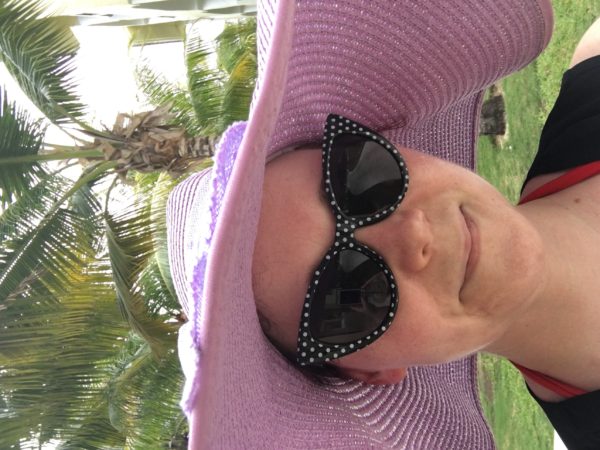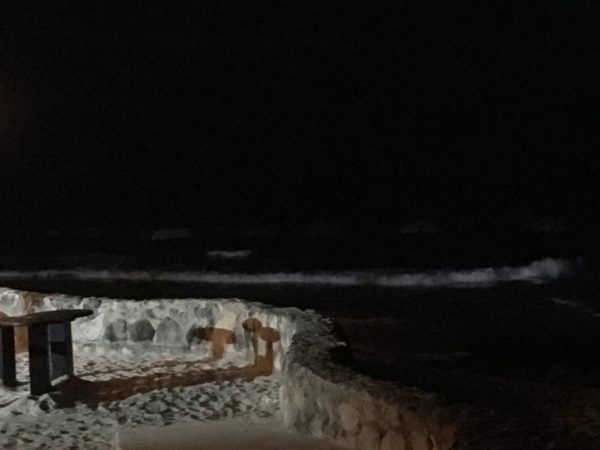39. How are mast cell disease, Ehlers Danlos Syndrome and POTS connected? (Continued)
I’m answering this question in two parts because there is a lot of information to relay and it’s important that it is done clearly. This is the second part.
Mast cells are found throughout the body. There is no record of a person living without mast cells. They perform many essential functions. This is the reason why killing off all of a person’s mast cells is not a viable treatment for mast cell disease. While mast cells cause so many symptoms and problems for patients with mast cell disease, life is unsustainable without mast cells.
Let’s specifically consider just a few of the mast cell’s essential functions here and how they relate to POTS and EDS.
Mast cells help the body to regulate blood pressure and heart rate. Many of the mast cell’s chemicals do this so it happens in many different ways all stemming from mast cells. This means that when mast cells are not behaving appropriately, there are many ways in which this dysfunction can lead to not regulating blood pressure and heart rate correctly.
- Histamine can affect blood pressure and heart rate differently depending upon how it acts on the body. If it uses the H1 receptors, it can cause low blood pressure. If it uses the H2 receptors, it elevates blood pressure. If it uses the H3 receptor, it can cause low blood pressure. When it does this at the H3 receptor, it’s because it tells the body not to release norepinephrine. Not releasing as much norepinephrine lowers heart rate and making the heart beat more weakly.
- Prostaglandin D2 lowers blood pressure and causes fast heart beat. However, the molecule made by breaking down PGD2, called 9a,11b-PGF2 increases blood pressure.
- Vasoactive intestinal peptide lowers blood pressure.
- Heparin, chymase and tryptase can decrease blood pressure. They do this by helping to make a molecule called bradykinin. When this happens, a lot of fluid falls out of the blood stream and gets stuck in the tissues, causing swelling.
- Thromboxane A2 increases blood pressure.
- Many mast cell molecules affect the amount of angiotensin II. This molecule strongly drives the body toward high blood pressure. Some mast cell molecules that affect blood pressure this way include chymase and renin.
Another very essential function of mast cells is to make connective tissue. Mast cells help the body to shape itself correctly and to make tissue to heal wounds. When mast cells are not behaving appropriately, their dysfunction can interfere with making connective tissue and wound healing. It can cause wounds to heal very slowly or for there to be too much scar tissue. It can also cause the connective tissue to be too weak or too strong.
The interaction between POTS and mast cell disease
In POTS, the body is already predisposed toward not regulating blood pressure and heart rate correctly. When a person with POTS stands up, their body quickly causes the heart to beat very fast. When your body does this, it takes steps that cause mast cells to become activated. In turn, the mast cells release chemicals to try and regulate the heart rate. However, if you have mast cell disease, the mast cell may release the wrong chemicals, or too many chemicals, failing to regulate the heart rate. This in turn results in a situation where the body becomes very stressed. Stress activates mast cells, which results in more release of chemicals. Patients can very easily become trapped in a cycle where POTS and mast cell disease irritate each other.
POTS can be exacerbated by the use of medications that affect blood vessels. Medications that are vasodilators (that make the blood vessels bigger) are taken by many people, including mast cell patients. In some people, using medications that blocks the action of histamine or prostaglandins can help to improve symptoms of both POTS and mast cell disease. Conversely, some of the medications used to manage POTS, like beta blockers, can trigger mast cell reactions and raise the risk of anaphylaxis. However, some POTS treatments can also help alleviate mast cell symptoms, specifically the use of IV fluids.
A paper published in 2005 found that hyperadrenergic POTS was sometimes found in patients with mast cell activation disorders.
The interaction between EDS and POTS
POTS is a form of dysautonomia. Dysautonomia means dysfunction of the autonomic nervous system. This is the part of your nervous system that helps to control automatic functions like heart rate, blood pressure and digestion.
In EDS patients, the body does not make collagen correctly. Collagen is the most common connective tissue protein in the body. This can cause vascular laxity. Blood vessels change size depending upon how much blood they need to move through them. If they get larger, it is called vasodilation. When they get smaller, it is called vasoconstriction. When a person has vascular laxity, their vessels can get larger than they should and they can stay that way longer.
POTS is the most common form of orthostatic intolerance in HEDS. Orthostatic intolerance is when a patient has symptoms specifically as the result of standing up. All EDS patients have more autonomic symptoms than healthy people. Among patients with EDS, autonomic symptoms are more common and more severe in HEDS. 94% of HEDS patients have orthostatic symptoms, including lightheadedness, dizziness, palpitations, nausea, blurred vision, and anxiety. Dysautonomia is much worse in HEDS compared to CEDS and VEDS patients.
Patients with HEDS were found overall to have overactive sympathetic nervous systems. However, when their body needed to activate in response to regulate heart rate and blood pressure in response to changing position, their responses were not strong enough.
In EDS patients, the connective tissue does not support blood vessels enough. This makes the harder for the blood vessels to get the blood back to the right places when you stand up, exacerbating POTS.
The interaction between EDS and mast cell disease
Mast cells are involved in making and repairing connective tissue, which involves collagen. For this reason, there are many mast cells living in connective tissues. Mast cells are stimulated when the body is making or trying to make collagen. Because EDS causes the body to make collagen incorrectly, mast cells can become activated to try and make collagen and other connective tissue correctly. When mast cells in one place are activated a lot over a long time, they can activate other mast cells elsewhere, resulting in systemic symptoms.
The interactions among mast cell disease, POTS and EDS
It is undeniable that there is an association among mast cell disease, EDS and POTS. However, there is not much data published on this topic. There was a poster presented in 2015 that found some combination of EDS, POTS and MCAS in a group of 15 patients. This is a very small population and we need larger studies to understand incidence. There is ongoing work to tie this group of conditions to specific genetic markers. However, this also requires further investigation and more patients. In the absence of hard data, we are forced to use some early data and understanding of similar conditions to try and figure out exactly what happens. As more data comes out, this understanding may change.
This is very much a chicken and egg situation where it’s not clear exactly what begets what. EDS is a genetic disorder and considered primary. However, that does not necessarily mean POTS or mast cell disease is secondary in this scenario.
Regardless of which is the initiating condition, the relationship seems to be something like the following:
1. A patient has EDS. They make defective connective tissue. These defective tissues do not support the bodily organs and vessels properly.
2. A patient stands up. Blood quickly moves from the torso into the legs.
3. The blood vessels in the legs try become more narrow and more able to keep fluid in the bloodstream. However, in an EDS patient, the blood vessels are stretched out and not held in the right place because the connective tissue is too weak.
4. The blood vessels in the legs are not able to pump blood back to the heart quickly enough. The body interprets this as having low blood pressure.
5. The nervous system sends signals to increase heart rate to compensate for the “low” blood pressure.
6. The signals sent to increase heart rate activate mast cells.
7. Mast cells activate release mediators to try and regulate blood pressure and heart rate.
8. Mast cell mediators activate other mast cells, eventually affecting other parts of the body.
9. The molecules released by mast cells make blood vessels bigger and more leaky.
10. As fluid leaves the bloodstream and gets stuck in places where it can’t work (third spacing), blood pressure decreases and heart rate increases. This exacerbates POTS symptoms. The cycle repeats.
For more detailed reading, please visit these posts:
Cardiovascular manifestations of mast cell disease: Part 1 of 5
Cardiovascular manifestations of mast cell disease: Part 2 of 5
Cardiovascular manifestations of mast cell disease: Part 3 of 5
Cardiovascular manifestations of mast cell disease: Part 4 of 5
Cardiovascular manifestations of mast cell disease: Part 5 of 5
Hypermobility Type Ehlers Danlos Syndrome and Autonomic Dysfunction (Part 1)
Hypermobility Type Ehlers Danlos Syndrome and Autonomic Dysfunction (Part 2)
Hypermobility Type Ehlers Danlos Syndrome and Autonomic Dysfunction (Part 3)
Hypermobility Type Ehlers Danlos Syndrome and Autonomic Dysfunction (Part 4)
Hypermobility Type Ehlers Danlos Syndrome and Autonomic Dysfunction (Part 5)
Deconditioning, orthostatic intolerance, exercise and chronic illness: Part 1
Deconditioning, orthostatic intolerance, exercise and chronic illness: Part 2
Deconditioning, orthostatic intolerance, exercise and chronic illness: Part 3
Deconditioning, orthostatic intolerance, exercise and chronic illness: Part 4
Deconditioning, orthostatic intolerance, exercise and chronic illness: Part 5
Deconditioning, orthostatic intolerance, exercise and chronic illness: Part 6
Deconditioning, orthostatic intolerance, exercise and chronic illness: Part 7





